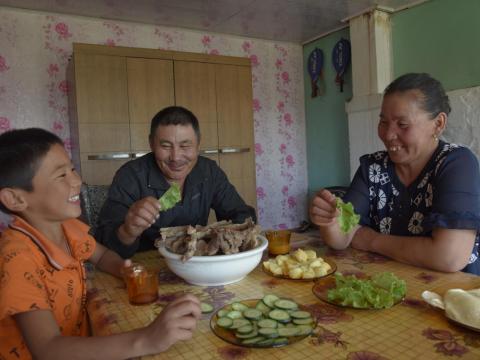Every child enjoys a secure life
Breaking the cycle of intergenerational poverty
Out of the 783 million extremely poor who lived below the poverty line of USD 1.9 a day, over 40% lived in Asia and the Pacific. Due to the socio-economic impact of COVID-19, an estimated 75 million more people in the region were pushed into extreme poverty in 2020. Researches suggest that climate and disaster risk will further push poor people into extreme poverty over the next decade. Children in the poorest and most fragile contexts face the greatest risks, including poor psychosocial and physical health, malnutrition, lack of education, social exclusion, limited future employment opportunities, and exposure to more violence, such as child labour and child marriage, as families and caregivers face economic difficulties.
World Vision is working to break the cycle of intergenerational poverty by 2030 so that the most vulnerable children can reach their full potential. Our global reach and focus on livelihoods are enabling families to create lasting change in their own lives and, in time, their communities. Our integrated model of livelihood development is comprised of evidence-based core project models to improve and sustain the well-being of the most vulnerable families, thereby contributing to improving the well-being of their children.
SDGs supported:

Key statistics
Asia has achieved remarkable economic progress in recent decades. Despite this, it is still home to nearly half of the world’s poorest people, rendering poverty a key issue to be addressed.
Our impact in East Asia
World Vision employs holistic approaches to empower households, especially women, to have increased access to profitable, safe, and sustainable livelihoods and employment.
Our approach to break the cycles of poverty

Ultra Poor Graduation
Our intensive two-year programme equips the most vulnerable families to be self-reliant once World Vision has moved on to help others. We provide access to temporary food and cash assistance, savings for transformation, training, and market development expertise to help families access employment opportunities or even kickstart a small business. Families also learn about health, nutrition, and hygiene practices to ensure that economic gains are translated into better care for their children.

Building Secure Livelihoods
We focus on strengthening families’ ability to build a secure livelihood both on-farm and off-farm in order to gain more nutritious food and a regular income to meet their children’s basic needs. Disasters often push families backwards so we encourage them to build resilience through saving, adopting climate-smart options and techniques, and managing water and natural resources more effectively.

Savings for Transformation
Savings for Transformation is being used by over six million active participants, many of whom are women, to facilitate savings and credit in a small-scale and sustainable way. It enables community members with the financial capacity to plan, cope with household emergencies, develop their livelihoods, and invest in the health and education of their children.

Microfinance
Microfinance is one of the most important tools to help families and communities break free from the cycle of poverty. By providing microfinance products and services to the financially underserved, families are empowered to generate income and not rely on charity in the long term. Our microfinance arm, VisionFund, works with potential employers and small-scale business owners by providing small loans to promote market and employment opportunities.
Stories of hope
The true indicator of our success comes directly from the children and the communities. These stories only come to life because of your generosity and support which enable us to bring positive change in the lives of the most vulnerable children across East Asia.








